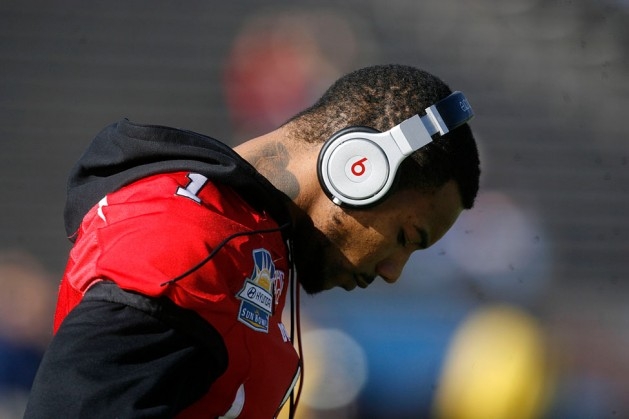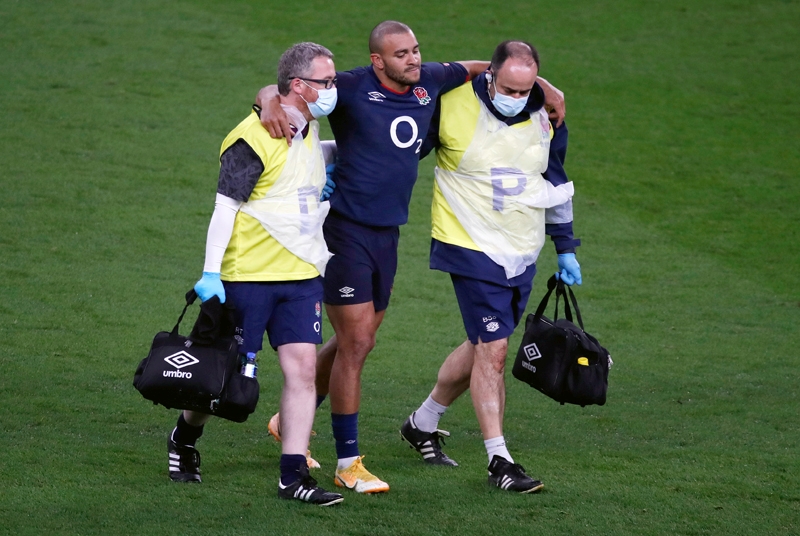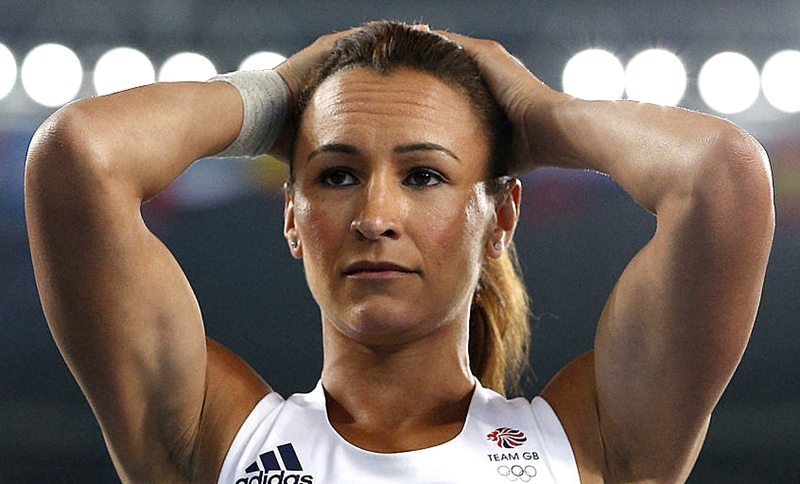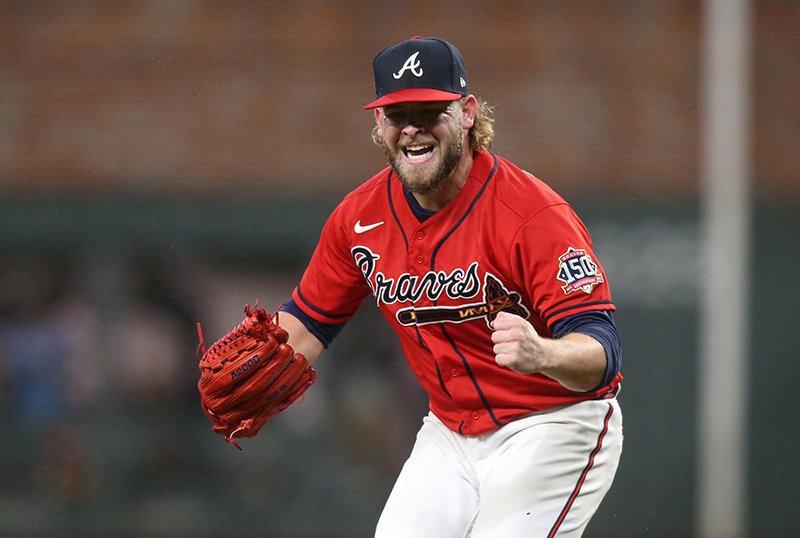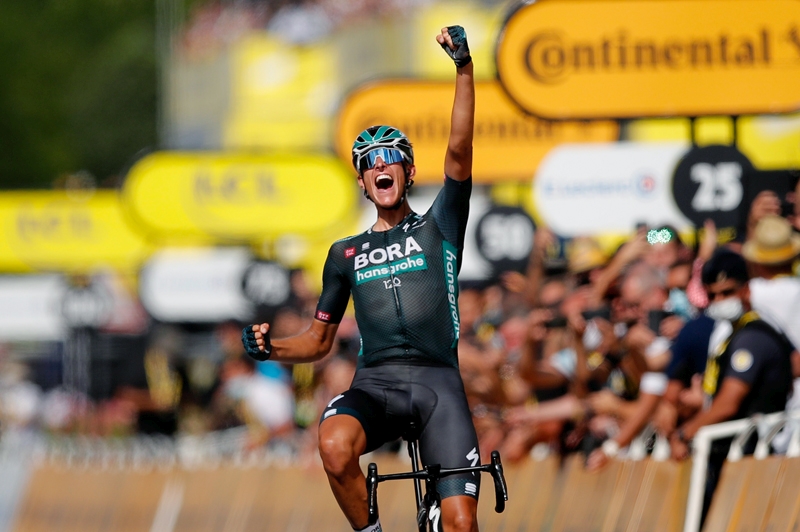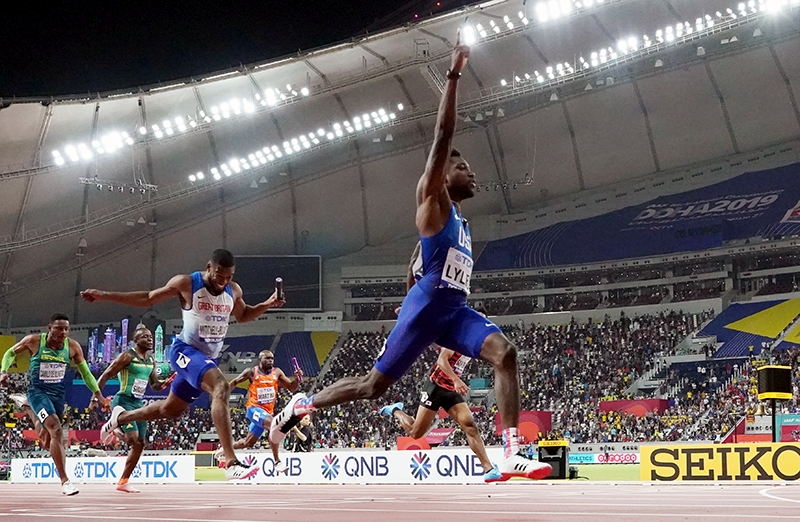You are viewing 1 of your 1 free articles. For unlimited access take a risk-free trial
Use your imagination: think yourself stronger!

Recent research suggests that athletes might be able to think themselves into becoming stronger. Andrew Hamilton explains
More than 15 months after the start of the Covid-19 pandemic, many athletes across the globe are still living under varying degrees of government-imposed restrictions, ranging from relatively ‘light-touch’ measures such as cancellation of sports events and social distancing to full-on ‘stay-at-home’ lockdown mandates. Given these restrictions, it is inevitable that the reduced opportunities to train and compete have had a major impact on the physical conditioning and fitness levels of athletes, resulting in long-term detraining for many athletes and the need for extra caution when returning to sport.Quarantine impacts
To give you some idea of the impact that these types of lockdown measures can have on athletes’ fitness levels, consider a study published by Brazilian scientists who investigated the effects of a 63-day period of quarantine on professional soccer players(1). Published last December in the Journal of Strength and Conditioning Research, this study assessed body composition, jump and sprint performance, hamstring eccentric strength, and intermittent cardiovascular fitness of 23 players who returned to training activities after 63 days of quarantine. The results were also compared with their physical condition assessed after returning to training at the end of a regular 24-day off-season period. It showed that despite the players’ best effort to try and maintain fitness during the quarantine period, they gained significant amounts of weight and body fat mass, their 10- and 20-metre sprint times increased and their countermovement jump height scores (a measure of explosive strength and power) also declined significantly.Strength training challenges
While it’s relatively straightforward to undertake flexibility and cardiovascular training from home, performing high-quality strength sessions is much more difficult. Few athletes have home gyms, and even those that do are likely to contain only basic strength training equipment. It’s fair to say therefore that the biggest impact on athlete conditioning during the restrictions has almost certainly been on strength, and one that is negative in nature. Indeed, putting the pandemic to one side, the same strength training conundrum faces many athletes even in more normal times; while the benefits of strength training for athletic performance are very significant, it can be inconvenient, and time consuming (often incurring extra cost – eg gym memberships etc) for athletes to accommodate targeted strength work into a program, which means it frequently gets sidelined.The thinking athlete’s alternative
When access to strength training facilities is limited (for whatever reason), are there are methods of making the training that can be done more effective? One obvious method is to ensure that exercise types, loadings, sets and reps are optimized (see these articles for more in-depth discussion about what this involves). Excellent post-training nutrition is also vital (see these articles). However, recent research suggests that a seemingly unlikely technique to enhance strength training also has real merit – the use of imagination!Traditionally, mental training using visual imaging has been applied to enhance performance in terms of coordination and the practice of motor skills. However, in the 1990s, researchers by the name of Yue and Cole studied two groups of participants each of whom completed a 4-week training period of isometric force production with the little finger(2). This training consisted of two types:
- Physical maximum voluntary contraction (MVC)
- Mental training imagined maximal isometric contraction (IMC).
Mixing imagery and strength training
That question was answered in 2011 by German scientists, who published a paper in the journal Frontiers in Psychology . This study investigated the magnitude of strength gains following high-intensity resistance training in which up to 75% of the conventional physical training was replaced by imagined maximal isometric contraction (IMC training)(3). During this IMC training, the subjects were instructed to imagine maximal contraction efforts as vividly as possible, using kinesthetic imagery (ie they had to imagine the sensation associated with a contraction effort while ensuring that their muscles stayed relaxed).Prior to the experimental intervention, subjects completed a 4-week standardized strength training program. The subjects were then split into three groups with different combinations of real maximum voluntary contraction (MVC) and mental (IMC) strength training - M75, M50, M25 and M0. These were structured as follows:
- M0 = zero imaginary training, 100% real training
- M25 = 25% imaginary/75% real
- M50 = 50% each of imaginary and real
- M75 = 75% imaginary/25% real
Figure 1: Study structure(3)

Left: experimental groups (M75, M50, M25, M0) performing different ratios of mental (IMC) and physical (MVC) training. Right: the temporal structure of the experimental procedure.
The findings
The key finding (see figure 2) was that IMC (imaginary) groups (M25, M50, M75) showed slightly smaller increases in maximal strength (3.0% to 4.2% gains) than ‘real’ training only group (M0 - 5.1% gain) - but the imaginary training gains were significantly greater than the control group, which experienced no gains at all. A week later, the ‘real’ strength training group continued to gain strength (as recovery continued) whereas the imaginary training groups did not. However, the imaginary strength gains made previously remained stable (ie they didn’t fade). The authors of the study therefore concluded that high-intensity strength training sessions can be partly replaced by IMC training sessions without any considerable reduction of strength gains!Figure 2: Strength gains with variable amounts of imaginary training

Compared to no training at all (control) 100% ‘real’ training (M0) produced the biggest gains. But adding in up to 75% of imaginary training (M25, M50, M75) still resulted in very significant gains!
Understanding the findings
How is it possible that simply mentally rehearsing a movement can lead to measurable strength gains and is there any scientific rationale for such an effect? Although this phenomenon is poorly understood, a 2014 study looked at the role of the primary cortex of the brain and how electric activity in the cortex is affected by the practice of mental imagery(4). Mental imagery has been shown to activate several cortical areas that are involved with actual motor behaviors, including the ‘premotor’ and ‘M1’ regions of the cortex. This study found that four weeks of wrist/hand immobilization in healthy subjects induced strength losses of around 45%. However, when the subjects performed mental imagery of strong muscle contractions five days per week, cortical inhibition associated with inactivity was significantly diminished and inactivity-induced strength losses were halved.New research
In the interim period up to the present time, there’s been very little new research into the topic of strength and mental imagery. One 2016 review study (pooling data on previous research) concluded that a combination of mental imagery and physical practice is an efficient method of training in respect to strength performance, and that the imaging ability of subjects and their motivation affect the efficiency of using mental imagery on strength performance(5). However, a brand new study on basketball players provides further empirical evidence that mental imagery can aid performance in strength-related activities, or at the very least, prevent inactivity-related decline.In this study, which was published last month in the journal Medicine and Science in Sports and Exercise, researchers investigated the effects of motor imagery training on strength and power performances of professional athletes during a period of detraining caused by the COVID-19 outbreak(6)
Thirty male professional basketball players were randomly assigned to three counterbalanced groups:
- A motor imagery group who completed imagery training by mentally rehearsing upper and lower limb resistance training exercises loaded with their optimum power loads.
- A second motor imagery group who completed imagery training by mentally rehearsing upper and lower limb resistance training exercises using 85% of one maximum repetition (85%1RM – ie imagined using heavier loads than above).
- A control group who performed no motor imagery.
The key finding was that after six weeks, the physical performance scores in both the motor imagery protocols had improved significantly (by 2%-9% depending on the performance parameter measured), but were reduced in the control group. Fascinatingly, the results also showed that the 85%1RM imagery protocol led to greater effects on maximal strength measures, while the optimum power imagery induced superior responses on measures of lower-limb power – almost as if the athletes’physical gains mirrored what they had been imagining! In conclusion, the researchers recommended that during periods of forced detraining (eg injury, lockdown etc) motor imagery is a viable tool for athletes to maintain and increase physical performance capacity in professional athletes.
Summary and practical advice
Bizarre as it seems, imagining your way to improved strength performance might not be crazy at all! The evidence to date suggests that, while not replacing conventional strength training, using motor imagery can help supplement the benefits of actual strength training, especially when time or other limitations prevent athletes from getting to the gym. This suggests that using imagined strength workouts can help athletes in various ways:- When travelling away and gym training is not possible.
- During the off-season, when recuperation is the main goal but athletes wish to minimize strength losses.
- During periods of restricted movement (eg lockdown).
- During periods of intense sports-specific training, when adding in actual strength sessions could lead to excessive fatigue/overtraining.
For each muscle group/movement:
- Perform four series of two maximal 5-second imaginary contractions with a 10-second rest between contractions.
- Take a 90-second rest between each series.
- Imagine maximal contraction efforts as vividly as possible, using kinesthetic imagery (ie you should imagine the sensation associated with a contraction effort, but your muscles must stay relaxed).
- Keep your eyes closed during the imagined imaged contractions.
References
- J Strength Cond Res. 2020 Dec;34(12):3316-3320
- J. Neurophysiol 1992. 67, 1114–1123
- Front. Psychol. 19 August 2011 | doi.org/10.3389/fpsyg.2011.00194
- J Neurophysiol. 2014 Dec 15;112(12):3219-26
- J Sports Sci Med. 2016 Aug 5;15(3):434-450
- Med Sci Sports Exerc. 2021 May 24. doi: 10.1249/MSS.0000000000002706. Online ahead of print.
Newsletter Sign Up
Testimonials
Dr. Alexandra Fandetti-Robin, Back & Body Chiropractic
Elspeth Cowell MSCh DpodM SRCh HCPC reg
William Hunter, Nuffield Health
Newsletter Sign Up
Coaches Testimonials
Dr. Alexandra Fandetti-Robin, Back & Body Chiropractic
Elspeth Cowell MSCh DpodM SRCh HCPC reg
William Hunter, Nuffield Health
Keep up with latest sports science research and apply it to maximize performance
Today you have the chance to join a group of athletes, and sports coaches/trainers who all have something special in common...
They use the latest research to improve performance for themselves and their clients - both athletes and sports teams - with help from global specialists in the fields of sports science, sports medicine and sports psychology.
They do this by reading Sports Performance Bulletin, an easy-to-digest but serious-minded journal dedicated to high performance sports. SPB offers a wealth of information and insight into the latest research, in an easily-accessible and understood format, along with a wealth of practical recommendations.
*includes 3 coaching manuals
Get Inspired
All the latest techniques and approaches
Sports Performance Bulletin helps dedicated endurance athletes improve their performance. Sense-checking the latest sports science research, and sourcing evidence and case studies to support findings, Sports Performance Bulletin turns proven insights into easily digestible practical advice. Supporting athletes, coaches and professionals who wish to ensure their guidance and programmes are kept right up to date and based on credible science.

